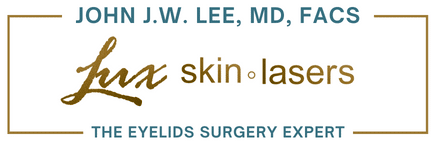Are Those Wrinkles Caused by Muscle Contractions?
 Most people assume that all wrinkles are created equal. You’ve seen one wrinkle, you’ve seen them all, right? Nope. There are actually two types of wrinkles: static wrinkles and dynamic wrinkles. Since we treat both of these wrinkle types with dermal fillers and neuromodulators, respectively, at Bryn Mawr Facial Aesthetics, let’s get into the difference.
Most people assume that all wrinkles are created equal. You’ve seen one wrinkle, you’ve seen them all, right? Nope. There are actually two types of wrinkles: static wrinkles and dynamic wrinkles. Since we treat both of these wrinkle types with dermal fillers and neuromodulators, respectively, at Bryn Mawr Facial Aesthetics, let’s get into the difference.
Static vs. dynamic
Static wrinkles hang around all the time. That’s because they are caused by damage to the skin and by declining collagen production levels as we age. Static wrinkles are to be found on the mid to lower face: beneath the eyes and all around the mouth. You know them as smile lines, marionette lines, parentheses lines, and barcode lines.
Dynamic wrinkles are completely different. They occur as the result of muscle contractions under the skin when we make various expressions, such as frowning, showing surprise, squinting, and others. Go ahead and make a frown. You can feel all of the muscles engage around your eyes, on your brows, and on your forehead. That’s the expressive area of your face, the upper third.
Over time and making these expressions hundreds of thousands of times, the skin above the muscle develops a wrinkle. These are dynamic wrinkles, and you’ll find them on the outside of your eyes (crow’s feet), between your eyebrows (glabellar/frown lines/the 11s), and on your forehead.
Relax the muscle, erase the wrinkle
No one likes these lines and wrinkles on the upper third of our face. But you can erase them with either of the two neuromodulators we inject at Bryn Mawr Facial Aesthetics: Botox and Dysport.
Neuromodulators work by relaxing the muscle contractions that are causing dynamic wrinkles. They do this by blocking the nerve messages sent from the muscle to the brain. The brain never gets the message to contract the muscle, so the muscle stays at rest and the wrinkle above it doesn’t form. All neuromodulators work the same way, but they have subtle differences.
- Botox
Botox is the original neuromodulator, first approved by the FDA for cosmetic use in 2002. Botox is one of the world’s most famous brand names. It has been injected millions of times around the world and has a loyal following. Botox is great for treating small areas with precision.
- Dysport
The FDA approved Dysport in 2009. Dysport is made with smaller molecules when compared with Botox. Smaller molecules enable Dysport to work faster than Botox (sometimes as soon as within 24 hours after injection, where Botox can take up to 72 hours). It also spreads when injected, so it can be used for larger areas. But Dysport is less precise for the same reason, so it isn’t great for smaller areas.
Now you’re a neuromodulator expert. Call us Bryn Mawr Facial Aesthetics Center, (610) 789-6701, and set up a Botox or Dysport session.
Categories
- Blepharoplasty (12)
- Blog (101)
- BOTOX (13)
- Brow Lift (7)
- CoolSculpting (8)
- CoolTone (2)
- Cosmetic Surgery (18)
- Dysport (2)
- Eyelid Surgery (6)
- Facelift (8)
- Facial Fillers (12)
- Facial Rejuvenation (6)
- Infini RF Microneedling (2)
- Juvederm (6)
- Kybella (3)
- Laser & IPL (7)
- Laser Hair Removal (2)
- Latisse (1)
- Liquid Facelift (1)
- Medical Skincare (1)
- MedSpa (1)
- Plastic Surgery (12)
- Practice News (1)
- Ptosis (3)
- Rhinoplasty (1)
- Scar revision (1)
- Skin Care (5)
- Skin Care Products (1)
- Uncategorized (7)
Recent Post
Archives
- March 2024 (1)
- February 2024 (1)
- June 2023 (1)
- January 2023 (1)
- December 2022 (1)
- November 2022 (1)
- October 2022 (1)
- September 2022 (1)
- August 2022 (1)
- July 2022 (1)
- June 2022 (1)
- May 2022 (1)
- April 2022 (1)
- March 2022 (1)
- February 2022 (1)
- January 2022 (1)
- December 2021 (1)
- November 2021 (1)
- October 2021 (1)
- September 2021 (1)
- August 2021 (1)
- July 2021 (1)
- June 2021 (1)
- May 2021 (1)
- April 2021 (1)
- March 2021 (1)
- February 2021 (1)
- January 2021 (2)
- November 2020 (1)
- October 2020 (1)
- September 2020 (1)
- August 2020 (9)
- July 2020 (1)
- May 2020 (4)
- April 2020 (3)
- March 2020 (9)
- February 2020 (2)
- January 2020 (2)
- March 2019 (1)
- February 2019 (1)
- January 2019 (1)
- December 2018 (1)
- November 2018 (1)
- October 2018 (1)
- September 2018 (1)
- August 2018 (1)
- July 2018 (1)
- June 2018 (1)
- May 2018 (1)
- April 2018 (1)
- March 2018 (1)
- February 2018 (1)
- January 2018 (1)
- December 2017 (1)
- November 2017 (1)
- October 2017 (1)
- September 2017 (1)
- August 2017 (1)
- July 2017 (1)
- June 2017 (1)
- May 2017 (1)
- April 2017 (1)
- March 2017 (1)
- February 2017 (1)
- January 2017 (1)
- December 2016 (1)
- November 2016 (1)
- October 2016 (1)
- September 2016 (1)
- August 2016 (1)
- July 2016 (1)
- June 2016 (1)
- May 2016 (1)
- April 2016 (1)
- March 2016 (1)
- February 2016 (2)
- January 2016 (1)
- December 2015 (1)
- November 2015 (1)
- October 2015 (2)
- September 2015 (1)
- August 2015 (1)
- July 2015 (1)
- June 2015 (1)
- May 2015 (1)
- April 2015 (1)
- March 2015 (1)
- February 2015 (1)
- January 2015 (2)
- December 2014 (1)
- August 2014 (3)
- July 2014 (3)
- June 2014 (3)
- May 2014 (3)
- April 2014 (3)
- March 2014 (2)
- February 2014 (2)
- January 2014 (1)
- December 2013 (3)
- November 2013 (3)
- October 2013 (3)
- September 2013 (3)
- August 2013 (3)
- July 2013 (4)
- June 2013 (2)
- May 2013 (3)
- April 2013 (7)
- March 2013 (8)
- June 2012 (1)






